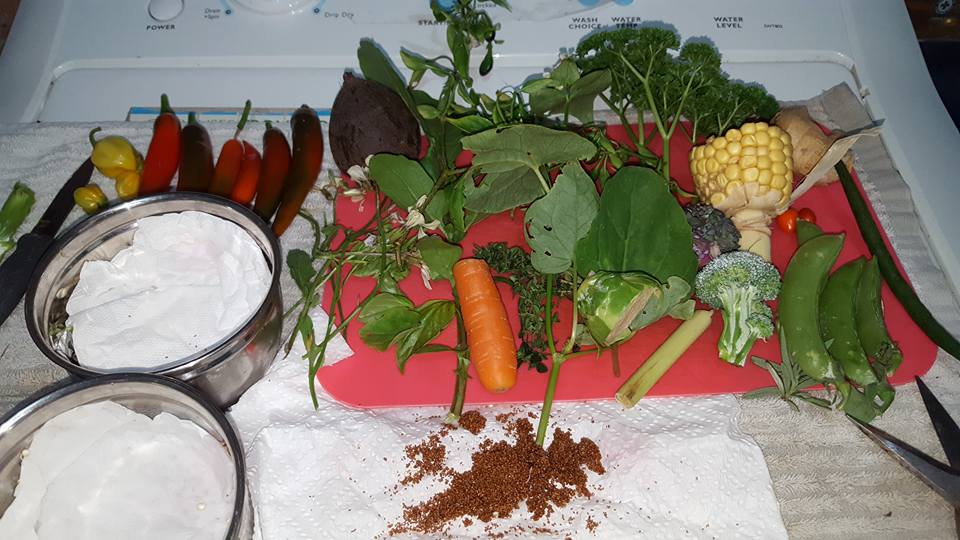Feeding your Cockatiel

Feeding Your Cockatiel
It is important to understand the differences between Wild birds and their captive counterparts. Wild birds will spend vast amounts of time and energy foraging for their food. Captive birds on the other hand are usually offered their food served in a bowl or plate and will consume a days worth of food in ten or fifteen minutes. Cockatiels are programmed to chew and forage, one common mistake people make is to fill their cages with cheap potentially toxic/dangerous toys and dowel perches. With nothing to chew on except their seed the birds will eat more seed, become bored, stressed and obese, which leads to associated health and behavioural problems.We recommend the concept of “captive foraging" or the art of mimicking the natural environment How you feed is as important as what you feed. Parrots in captivity need to chew on green leafy branches and ‘wild foods’ to satisfy their foraging instincts. Foraging opportunities for captive parrots are necessary to maintain both mental and physical health.
Correct Diet.
In captivity it is not possible to feed a wild diet, all we can hope to achieve is an approximation. Another common mistake people make is to feed only seed or only pellets or a combination of both, to over supplement vitamins and minerals and to concentrate to much on super foods. Birds eat to satisfy energy demands, so on a diet high in energy e.g. a high fat diet, they will eat less and therefore may not obtain the required nutrition.There is a lot of debate on what actually makes up a balanced diet. Over the last decade we have seen many advances in understanding avian nutrition. By far the most scientific research that has been done pertains to poultry and the poultry industry is still learning. The situation in regards to Cockatiels amounts to little more than a baseline from which to start, with many people holding many different points of view. Different experts will recommend different amounts of fruit and vegetables, seeds and pellets. Many of the recommendations don't mention fresh sprouts, plant material, micro greens or green grass and other seeds like flax, rocket, wild mustard and hop bush.
Our preference for feeding is to first offer fresh green seeds, followed by sprouts and a green chop, with pellets added in the afternoon, seeds mainly chia, poppy, sesame, is available in a forage area all day, and safe native plant material is provided for chewing. Mainly bottle brush, banksia, gum, gravillea and tea tree. Late afternoon add a small amount of seed into a green chop.
Many sites describe a feeding regime in terms of % greens/veggies, seeds, pellets, and in some cases sprouts as well as listing % protein, fats, minerals and amino acids. Of course its one thing to provide a balanced diet by providing mixes of different plant material, greens, sprouts, pellets and seeds and its another thing to get your bird to eat each item in the correct amount and not to simply pick out his favourites. Proponents of pellet based diets point out the fact that pellets are specifically formulated to take the guess work out of providing a balanced diet and unlike fortified seed mixes they do not give your bird the opportunity to pick out only what he likes.
The debate about the % of pellets, seeds, fresh greens is largely irrelevant if your bird prefers to eat one over the other. For those interested in % here is roughly what we believe 30% sprouts, 35% fresh greens and plant material including green seeds and grasses, 20% pellets, 10% dried seed. Aim for 12% - 17% total protein (20% when breeding/weaning), you can boost protein levels by providing, meal worms, boiled fish, egg or chicken no more than 5% of the diet.
How to Make a Balanced ChopThe limiting Amino acids in birds are methionine and lysine along with arginine and threonine (some what less so). Lysine is the limiting amino acid in most grains and seeds, while methionine is the limiting amino acid in most beans and legumes. Its important to aim for a complete protein balance. The recommended ratio of grains to beans is usually in the neighborhood of 2:1
While studies have shown that feeding ridiculously large amounts of cholesterol to birds can cause atherosclerosis, there is no information on the effect of consuming moderate amounts of animal protein. The researchers in the field don't appear to believe that cholesterol in the diet is a leading cause of atherosclerosis in captive parrots. They cite other factors as prime suspects, including age, sex, activity level, genetics, stress levels, and the amount and type of fat in the diet. The papers that mention the two cholesterol-feeding studies are silent on the subject of avoiding animal protein.
ReferenceSafe Foods.
Safe foods are generally listed under Safe Vegetables, Safe Herbs, Safe Fruits, Safe Nuts, Safe Sprouts you will also find Safe Plants, Safe Flowers, Safe Grasses, Safe Weeds and Safe Table Food lists.
Unsafe Foods
Unsafe foods are generally listed as Unsafe under the categories above and special mention are given to alcohol, tobacco, avocado, unripe egg plant, licorice, chocolate, caffeine, products containing lactose, onions (in quantity), mushrooms (some), peanuts and other plants susceptible to developing moulds or fungus. Look here for information on plants know to be toxic , specific plant toxins and symptoms and Naturally Occurring Food Toxins
Supplements
Generally if your bird is receiving a balanced diet along with access to direct sunlight providing supplements is not required. I would not provide additional supplements without veterinary advice.